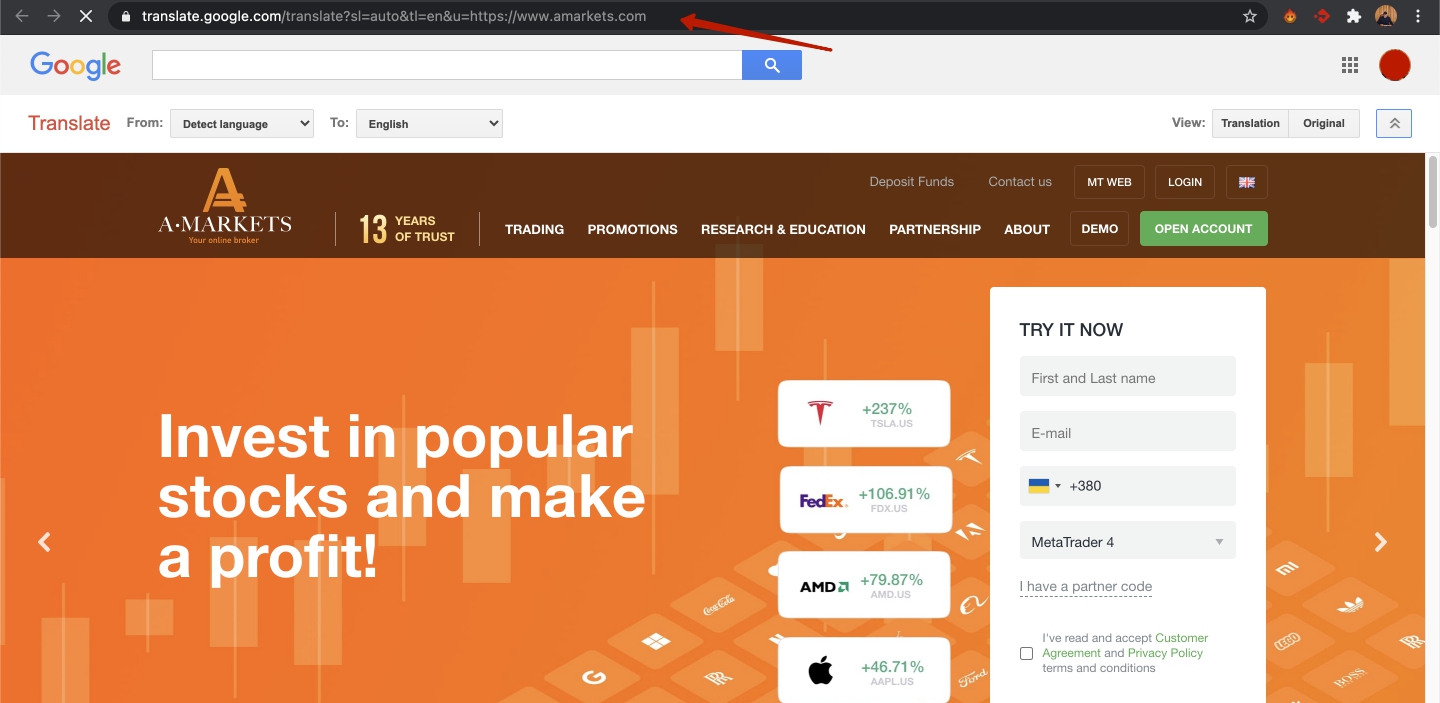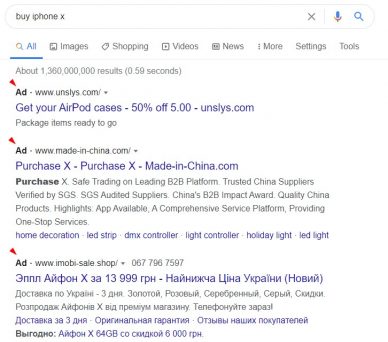Cloaking is a search engine optimization (SEO) technique where the user sees a different type of content in his browser than that presented for a web crawler (i.e search engine bot).
To cloak means to hide or disguise something. The cloaking technique can be used for different purposes, to solve specific issues. Let’s talk about the use of cloaking in more detail.
Why use cloaking: an example from social networks
Facebook monitors links and blocks them if they lead to:
- websites related to cryptocurrencies
- brokers’ websites
- affiliate networks and traffic arbitrage websites.
Facebook will block the link even if you sent it to a friend just to share. And you will never prove to Facebook that your product is 100% legal if it falls into one of the above-mentioned categories.
Moderation will not allow your friends and subscribers to receive a link to the website that you sent them via the social media network. Now, the good news is – we can give you a life hack you can use to prevent them from blocking your link:
- Open Google Translator using this link.
- Paste your website link into the translation field.
- A new link will appear in the box on the right. Right-click on the link to copy it. If there is no “copy” option, just follow the link and copy it from the address bar:
Now that you’ve cloaked (or masked) the link, no social network will block it.
But masking the link is the tip of the iceberg in the cloaking world. Cloaking allows you to hide the page and the whole website. Let’s see how it works.
White hat and black hat cloaking
Search engines don’t like it when you mask your website pages.

You may have heard that there are black hat and white hat hackers in the programmers’ world. White hat hackers are those heroes fighting the villains – the black hat hackers: cybercriminals who hack websites, stealing millions of dollars every year.
Likewise, SEO can use white hat and black hat cloaking techniques:
- White hat SEO is when you display SERP-tailored content and don’t separate visitors and search engine bots.
- With black hat cloaking, you have different content for humans and web crawlers.
In fact, the division into a white hat and black hat cloaking is provisional, just to make it easier for us to figure it out:
IP cloaking
If you use black hat SEO, Google will block you, and your website will get delisted from search engine results.
So, you can mask your content in two ways:
- Use IP address
- Use HTTP Request
To cloak a page or website, you need to understand a thing or two about programming and SEO and have a basic knowledge of:
- Python, PHP or Node.js language
- how to use an arbitration tracker like Keitaro.
Let’s start with a simple method, IP masking. IP-address allows you to determine the user’s geographic location i.e geolocation.
Here’s how IP cloaking, or IP-delivery, works: you check which region/country your user comes from and give him the desired content. This is how popular multilingual WordPress plugins work.
By the way, the Google search engine actively uses IP-delivery to show us the most relevant ads and content. So IP based content delivery is a completely legal way of on-page SEO.
Black hat cloaking is when you show different content to a person and web crawler (bot). To do so, the client’s IP address and HTTP request are used. Let us explain.
When you visit a website, the browser sends an HTTP request. It contains data about:
- your language
- operating system
- your browser version
- about the device you’re using to sign – be it a smartphone, a tablet or a laptop
This data is needed to separate the delivery of content, and here’s why.
When should you use black hat cloaking techniques?

Say, you are investing in the stock market and want to share your experience with your audience. But social networks don’t like the topic of investment and block your links from time to time.
But you are running a legitimate business and you want to be able to tell people about it. For example, show them a landing page with your services, or create an advertisement and find investors.
To prevent social networks from blocking links to your landing page, you use client IP and HTTP requests to divide them into your target audience, moderators, and search engine bots. Then you show a particular type of content (or landing page) to moderators and a completely different type of content or landing page to your potential customers.
Case study: How to promote investment content topics on Facebook
When it comes to investment content topics, we suggest not to waste your time and effort on black hat cloaking. Classic methods will work better.
For example, you can promote your services on your Facebook business page. Do not promote your account from scratch: hire a freelancer or buy a ready-made account on the exchange.
Keep in mind that Facebook moderators will not allow ads that use phrases like “quick earnings, easy money, guaranteed income, making money from Forex” and other similar word combinations. Moreover, such phrases can cause negativity with a more experienced target audience. Do not create false expectations and give any promises in advance. Create the right landing pages or use custom-made templates offered by AMarkets to its partners. Using bespoke landing pages will greatly simplify your work and speed up the launch of your advertising campaigns.
After that, spend at least $50 on advertising in any “white hat” niche. This will boost your account reputation and allow you to pass moderation easier.
When you start promoting your business, formulate thoughts correctly, for example:
- “We offer investment management services …”
- “Financial services”
Remember: you want ads that won’t provoke customer complaints and moderation checkups. Focus on customer benefits and highlight them in your offer. This way only the target audience will come to you and third-party persons won’t complain and report you.
Summing up
Cloaking is traffic separation. It allows you to control and separate what users see from what search engine crawlers and social media moderators see.
Webmasters use cloaking techniques to get their website higher up on SERPs and increase the site’s revenue.
Cloaking may come in handy if your business is:
- Investing in the foreign exchange and stock market
- Cryptocurrency
- CPA marketing, affiliate networks
To mask a website, you need to know programming and SEO.
Search engines don’t like black hat cloaking and can remove your site from their index. White hat SEO optimization will be enough for you as a website owner. For example, you can serve content and ads specific to the user’s region and language. This is how Google SERP works.
Remember: you may need black hat cloaking only in certain areas, while white hat cloaking is completely legitimate and there’s no risk of problems.
Make sure that your website visitors are served relevant content. This way, top positions in SERP will be a done deal. Good luck with your SEO!
Join a trusted financial services company with a rich history and become successful with AMarkets.




